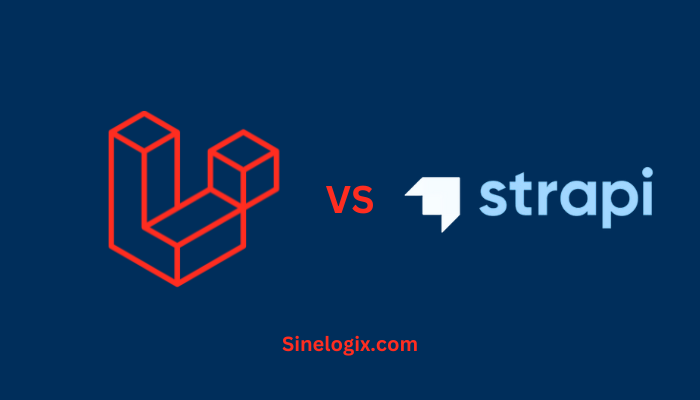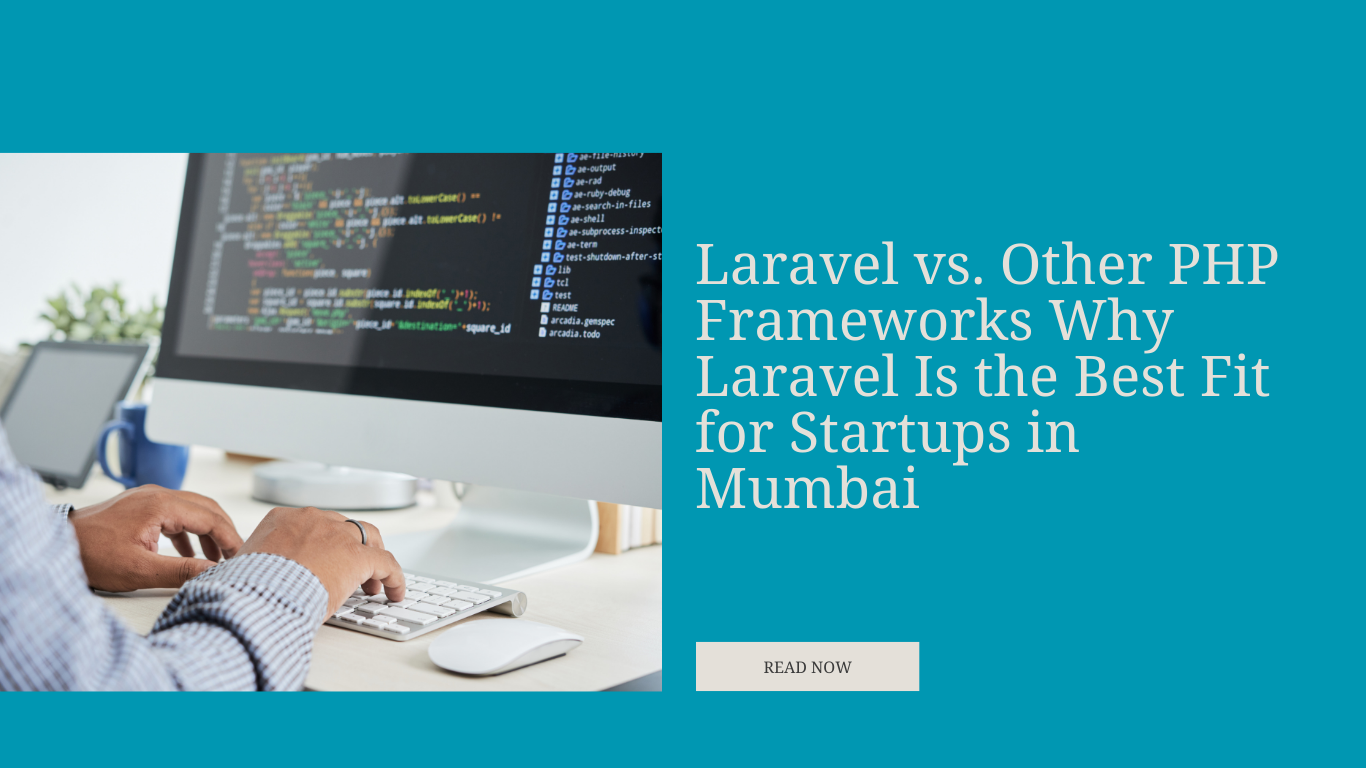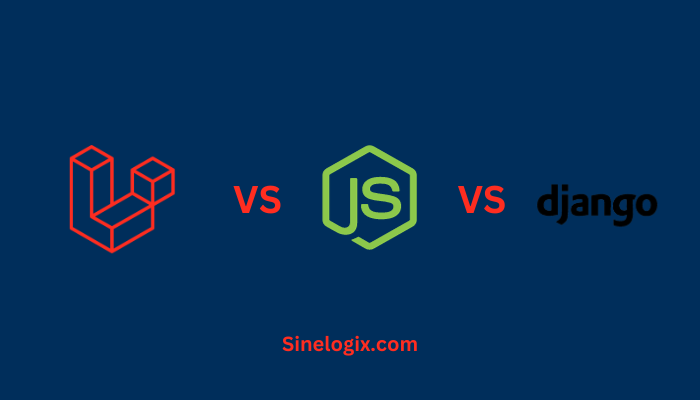Selecting the right framework for web development is a critical decision that significantly influences the success of your project. Laravel, a robust PHP framework, and Strapi, a headless CMS built on Node.js, represent two powerful options with distinct strengths. In this comprehensive comparison, we will delve into 20 critical aspects to help you make an informed decision based on your project’s specific requirements.
Introduction
Web development frameworks and content management systems play a pivotal role in shaping the architecture, functionality, and ease of development for web applications. Laravel, with its roots in PHP, and Strapi, a modern headless CMS, cater to different needs within the web development landscape. This detailed analysis aims to unravel the intricacies of Laravel and Strapi across various dimensions, empowering you to choose the framework that aligns best with your project goals.
1. Architecture
Laravel: Laravel adopts the Model-View-Controller (MVC) architecture, offering a structured approach to application development. This separation of concerns enhances code organization and maintainability, making Laravel suitable for projects of varying sizes. Laravel’s architecture is well-suited for both monolithic and microservices architectures.
Strapi: Strapi, as a headless CMS, follows a modular and extensible architecture. It decouples the content management layer from the presentation layer, providing flexibility for developers to use any frontend technology. Strapi’s architecture is designed to be scalable, allowing developers to build robust and scalable applications.
2. Language
Laravel: Laravel is a PHP framework, leveraging the versatility and widespread adoption of PHP for web development. PHP’s expressive syntax and extensive ecosystem make Laravel an attractive choice for developers seeking a powerful yet accessible language for their projects.
Strapi: Strapi is built on Node.js, using JavaScript for server-side development. JavaScript’s asynchronous nature makes it well-suited for handling concurrent requests in the context of a headless CMS. This allows developers to use a consistent language (JavaScript) across both the frontend and backend.
3. Security
Laravel: Laravel is renowned for its robust security features, incorporating built-in functionalities like Cross-Site Request Forgery (CSRF) protection, encryption, and a dedicated security team. Laravel’s commitment to security reduces the risk of common web vulnerabilities, ensuring a secure development environment.
Strapi: Strapi takes security seriously and provides features such as role-based access control (RBAC) to restrict access to content and APIs. Additionally, Strapi’s plugin system allows developers to enhance security by adding authentication providers and other security-related features.
4. Performance
Laravel: Optimized for performance, Laravel employs opcode caching and efficient asset compilation using Laravel Mix. These optimizations contribute to faster response times and improved overall performance, making Laravel suitable for a wide range of applications.
Strapi: Strapi’s performance is influenced by the underlying Node.js runtime. Node.js is known for its non-blocking, event-driven architecture, making it suitable for handling concurrent requests. Strapi’s performance can be further optimized by caching and optimizing API queries.
5. Community and Ecosystem
Laravel: Laravel boasts a large and active community, contributing to a vast ecosystem of packages and plugins. The community’s engagement ensures continuous improvement, extensive documentation, and a wealth of resources for developers. Laravel’s ecosystem simplifies development tasks by providing solutions for a broad spectrum of functionalities.
Strapi: Strapi has a growing community, and its ecosystem is expanding with the development of plugins and extensions. Strapi’s plugin system allows developers to leverage and contribute to the ecosystem by building and sharing custom functionalities.
6. Database Support
Laravel: Laravel’s Eloquent ORM supports multiple databases, including MySQL, PostgreSQL, and SQLite. This flexibility allows developers to choose the database that best fits their project needs. Eloquent’s intuitive syntax and powerful features make database interactions seamless and enjoyable for developers.
Strapi: Strapi supports various databases, including MongoDB, PostgreSQL, MySQL, and SQLite. Developers can choose the database that aligns with their project requirements. Strapi’s flexible database support makes it adaptable to different use cases.
7. REST API Development
Laravel: Laravel is renowned for its exceptional support for building RESTful APIs. The framework provides built-in features and additional packages that simplify API development. Laravel’s dedicated API tools, such as resource controllers and Eloquent resources, streamline the process, making it an ideal choice for projects with robust API requirements.
Strapi: Strapi is designed for API-first development, and it excels in creating RESTful APIs out of the box. Developers can easily define content types, create relationships, and customize API endpoints using Strapi’s intuitive administration panel.
8. GraphQL Support
Laravel: While Laravel supports GraphQL through additional packages, integrating GraphQL functionalities may require additional configuration. The ecosystem provides flexibility but demands extra effort for implementation. Laravel developers can leverage packages like Lighthouse to implement GraphQL seamlessly.
Strapi: Strapi has native support for GraphQL, allowing developers to create GraphQL APIs alongside traditional REST APIs. Strapi’s GraphQL implementation is well-integrated into its content management system, providing a powerful and flexible solution for API development.
9. Real-Time Features
Laravel: Implementing real-time features in Laravel involves tools like Laravel Echo and Pusher, facilitating the integration of WebSockets and enabling dynamic, real-time user experiences. Laravel Echo provides an elegant API for handling WebSockets, making it easy for developers to implement real-time features without extensive configuration.
Strapi: Strapi itself does not provide native support for real-time features. However, developers can integrate third-party solutions or libraries, such as Socket.io, to add real-time functionality to Strapi-powered applications.
10. Testing
Laravel: Comes equipped with PHPUnit, a robust testing framework that fosters a comprehensive testing environment. Laravel’s testing tools allow developers to write unit tests, feature tests, and browser tests effortlessly. PHPUnit’s integration with Laravel’s testing suite ensures reliable and efficient testing processes.
Strapi: Strapi provides testing utilities for writing unit tests and integration tests. Developers can use testing frameworks such as Jest or Mocha to test custom plugins and functionalities. While Strapi encourages testing, the testing ecosystem may not be as extensive as Laravel’s.
11. Scalability
Laravel: While scalable, applications with high-traffic demands may require additional configurations. Laravel’s scalability shines in medium to large-sized projects with moderate traffic. Laravel Horizon, a robust job queue monitoring tool, enhances scalability by efficiently handling tasks in the background.
Strapi: Strapi’s modular and extensible architecture supports scalability. Developers can scale Strapi applications horizontally by distributing the load across multiple instances. Additionally, Strapi’s support for microservices enables the development of scalable and distributed systems.
12. Documentation
Laravel: Offers comprehensive documentation, providing developers with clear guidance and examples for effective implementation. Laravel’s documentation covers everything from installation to advanced features, making it a valuable resource for both beginners and experienced developers.
Strapi: Maintaining high-quality documentation, Strapi provides detailed guides, examples, and API references. The documentation is structured to cater to developers of varying skill levels, aiding in the efficient implementation of Strapi features and best practices.
13. Middleware
Laravel: Implementing middleware in Laravel allows developers to handle HTTP requests at various stages, providing a centralized mechanism for request processing. Laravel’s middleware system allows developers to inject custom logic before or after the request is handled, enhancing flexibility and customization.
Strapi: Strapi employs middleware for request processing, allowing developers to extend and customize the request/response cycle. Middleware in Strapi is used to execute functions before or after the main logic, providing a way to modify or augment the request and response.
14. Code Organization
Laravel: Following a convention-over-configuration paradigm, Laravel simplifies code organization and ensures consistency across projects. Laravel’s folder structure and naming conventions encourage developers to organize code in a way that aligns with best practices, streamlining collaboration and onboarding.
Strapi: Strapi’s modular design encourages developers to organize code by creating plugins and services. The separation of concerns allows for a clean and organized codebase. Strapi’s plugin system facilitates code organization by breaking down functionality into modular components.
15. Authentication
Laravel: Laravel simplifies authentication with built-in features such as Laravel Passport, streamlining the process of implementing secure authentication mechanisms. Laravel Passport provides a full OAuth2 server implementation with minimal configuration, making it easy for developers to integrate secure authentication into their applications.
Strapi: Strapi provides authentication features out of the box, allowing developers to configure and customize authentication settings. Strapi’s administration panel includes user management functionalities, and developers can extend authentication using plugins or customizations.
16. Dependency Injection
Laravel: Laravel employs a powerful Inversion of Control (IoC) container for managing class dependencies, enhancing code maintainability. The IoC container allows developers to inject dependencies into classes rather than hard-coding them, promoting loose coupling and making code more modular and testable.
Strapi: As a Node.js application, Strapi supports dependency injection, allowing developers to manage and inject dependencies into services. The use of dependency injection in Strapi contributes to clean and organized code, following best practices in JavaScript development.
17. Learning Curve
Laravel: Known for its beginner-friendly nature, Laravel features straightforward syntax and extensive documentation, reducing the learning curve. Laravel’s documentation includes guides, tutorials, and examples that cater to developers of all skill levels. The framework’s simplicity and expressive syntax make it an ideal choice for those new to web development.
Strapi: Strapi’s learning curve is relatively moderate, especially for developers familiar with JavaScript and Node.js. The administration panel provides an intuitive interface for content management, and developers can quickly grasp Strapi’s concepts and workflows with the help of its well-structured documentation.
18. Community Support
Laravel: Enjoys strong community support, featuring forums, conferences, and a vibrant ecosystem. The community actively contributes to the framework’s improvement, addresses issues, and shares best practices. Laravel’s popularity ensures a robust and engaged community that provides valuable resources for developers.
Strapi: Strapi has a growing community that actively contributes to its development. The community is vibrant, and with the increasing adoption of headless CMS architectures, Strapi benefits from collaborative efforts and knowledge sharing within its community.
19. Tooling
Laravel: Laravel’s artisan command-line tools streamline various tasks, enhancing developer productivity with efficient workflows. The artisan CLI provides commands for tasks such as database migrations, testing, and code generation, reducing the manual effort required for routine development tasks.
Strapi: Strapi includes a web-based administration panel for content management and configuration. Additionally, Strapi integrates with popular developer tools, including Git, npm, and GraphQL playground, providing a seamless development experience.
20. Popularity
Laravel: Embraced widely in the PHP community, Laravel boasts a significant number of projects and companies adopting it for diverse applications. Laravel’s popularity is evident in its extensive usage, community engagement, and the numerous successful projects built with the framework.
Strapi: As a modern headless CMS, Strapi has gained popularity, especially in projects requiring decoupled content management. Strapi’s user-friendly interface and flexibility have contributed to its adoption, making it a popular choice for developers building content-driven applications.
Related Articles:
Conclusion
In this comprehensive exploration of Laravel and Strapi, both frameworks demonstrate unique strengths. Laravel, deeply rooted in PHP, provides a robust and versatile framework for building web applications, while Strapi, as a headless CMS, excels in content management and API-driven development.
The choice between Laravel and Strapi depends on your project’s specific requirements, development team’s expertise, and architectural preferences. Whether you opt for Laravel’s PHP environment or Strapi’s headless CMS capabilities, each framework equips you with powerful tools for successful web development.
By understanding the nuances of these frameworks, you gain not only a deeper comprehension of their capabilities but also the insight needed to align your choice with the unique requirements of your project. As the web development landscape continues to evolve, this detailed comparison ensures that you are well-equipped to navigate the complexities of modern web application development.




